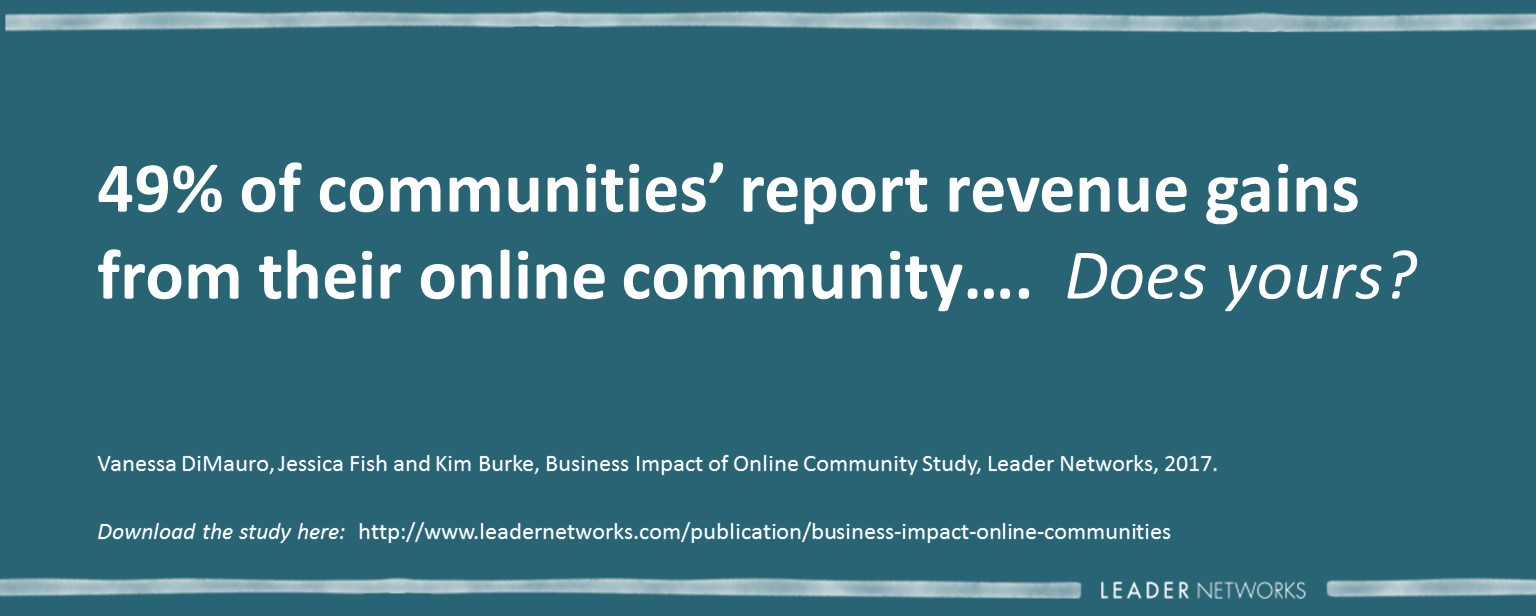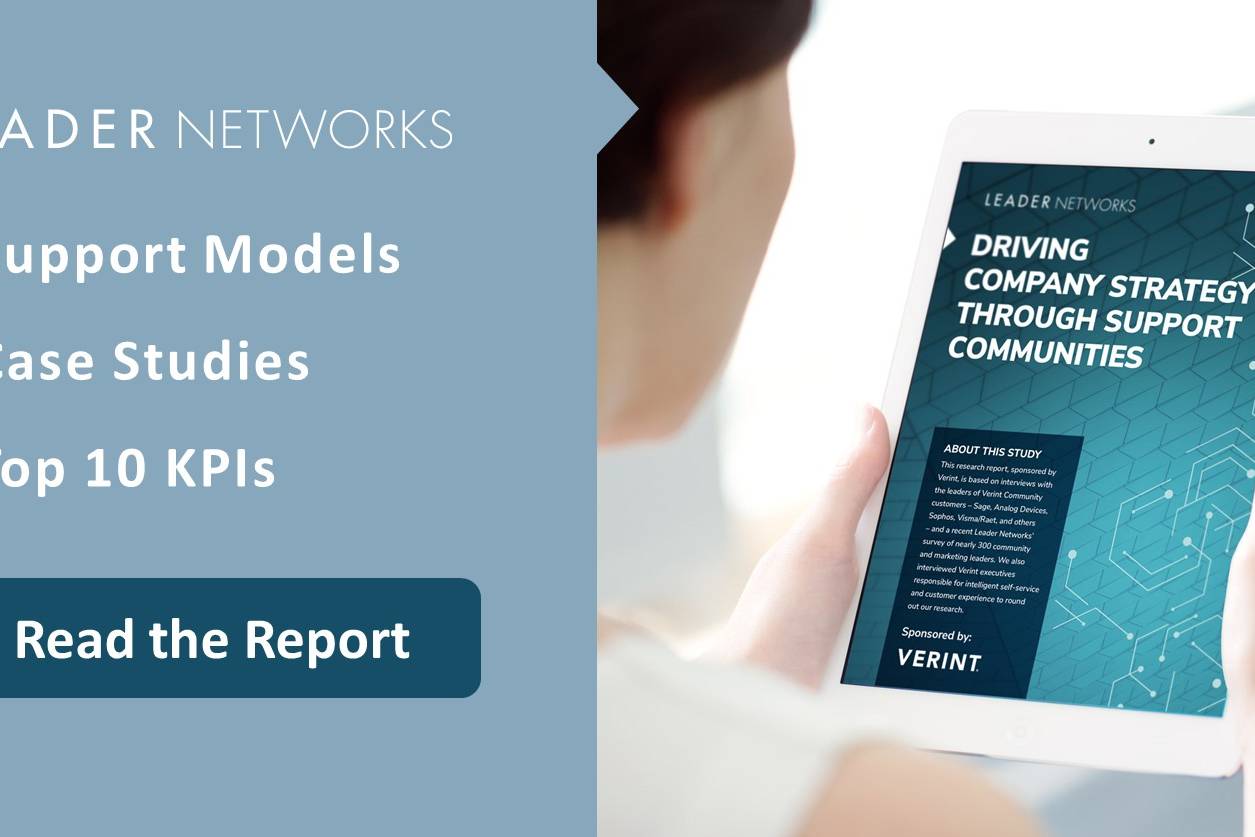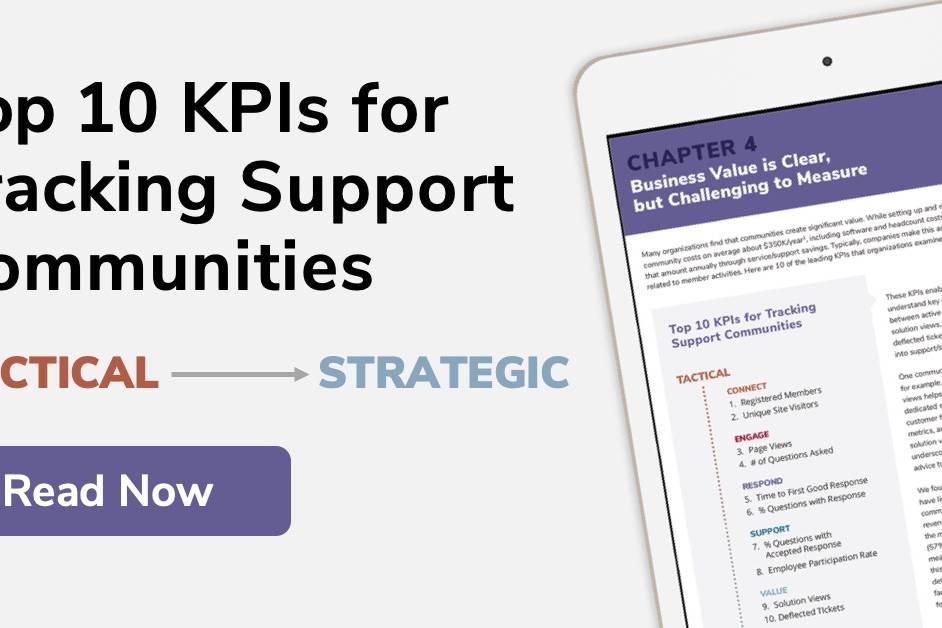In our latest research study, “The Business Impact of Online Communities,” we found that almost half (49%) of communities report revenue gains from their online community. This is an exciting proof-point, but it warranted further investigation. What enables some communities to be financially productive while others remain a cost center?
To answer this question, we analyzed the data to identify the winning conditions that bring in the green. It became clear that mature online communities tend to report greater revenue gains:
- 55% of communities five years or older generate or influence more than $1M
- 43% of communities that have existed for two years or less generate or influence less than $10,000
At first glance, it seems that it takes at least five years for a community to stabilize, build critical mass, break even, and generate revenue. But then we started to peel back the onion to better understand the drivers behind this hunch.
Based on in-depth conversations with our clients, backed by additional research, we’ve found that “ramp up” issues don’t stand between communities and revenue – measurement and reporting issues do.
In fact, it does not typically take five years for an online community to realize revenue. It takes five years for community leaders to develop processes and metrics to measure and report revenue gains.
It does not have to take so long!
Here are three steps marketing and community leaders can follow to recognize revenue faster:
- Build a business case
Too often, organizations build online communities based on a single use case – such as customer support or employee advocacy – not a full-blown business case that articulates a clear path to an ROI. As a result, community managers put their time and attention into the tactical aspects of managing their communities instead of focusing on the business impact that the community is making.
The catalyst for change usually occurs when the community graduates from being a social experiment and becomes aligned with a line of business. That’s when an executive steps in and wants to know how the community is advancing his or her business goals. And that, in turn, forces the community manager to articulate KPIs and success measures.
It’s time to put the horse before the cart! By building a solid business case – including a revenue model – at the outset of the process, community managers can measure what matters from the get-go.
We spoke with Leo Daley, Director of Services Marketing & Community at Kronos who discussed the importance of planning business impact from the start. He says “We just went live in October, and our community is first and foremost a support destination, so we’re focused on providing a great customer experience in finding answers to support questions and managing support cases. Doing that well drives customer success and loyalty. Also, our sales reps are telling me the community is a unique differentiator with prospects. And since the Kronos community is on the same platform as our CRM and support, we’ll be able to measure the impact.”
- Get your financial house in order
You won’t know if you’re achieving the benefits of your business case if you’re not tracking basic financial data. Yet, in our research study, 25% of marketing and community leaders – one in four – report that they don’t know or don’t track their community expenses. And almost 40% do not know whether their community saves their organization money or not.
The mandate for community managers is crystal clear: know what you’re spending and know what you’re saving. Even if your community is generating revenue, without a clear picture of spend and yield, it’s impossible to calculate ROI.
- Connect the dots
In our study, we found that 36% of online communities influence revenue via customer retention and satisfaction – which is how the majority of marketing and community leaders define competitive advantage.
If your community platform is not integrated with your other customer-focused platforms, how can you measure the influence on revenue? You must connect your member data to customer data.
And Michelle Groff-Burling, Director of Content Management, Communities, and Collaboration at Hitachi Data Systems had more to add. “One of our key initiatives is to redefine what and how we measure to gauge the business value derived from our community,” Michelle explained. “As a start, we mapped the community’s purpose to our organization’s business strategy – associating all the work that takes place in community back to our goals. This provided the foundation for measurement areas that will offer key ROI insights. Some examples include identifying sales inquiries attributed to community, the number of resolved issues, and support call deflection.”
So what’s the bottom line? Revenue is not dependent on community maturity. Communities that generate or influence more revenue do so because they have developed a financial model for tracking revenue. With a solid business plan, sound financial metrics, and integrated customer data, you can cut to the chase – measuring and reporting revenue sooner, rather than later.
Download the study here (free).
Warning: Attempt to read property "base" on array in /home3/trusten9/public_html/leadernetworks/wp-content/plugins/wp-user-profile-avatar/shortcodes/wp-user-profile-avatar-shortcodes.php on line 665
Warning: Attempt to read property "base" on array in /home3/trusten9/public_html/leadernetworks/wp-content/plugins/wp-user-profile-avatar/shortcodes/wp-user-profile-avatar-shortcodes.php on line 665
Warning: Attempt to read property "base" on array in /home3/trusten9/public_html/leadernetworks/wp-content/plugins/wp-user-profile-avatar/shortcodes/wp-user-profile-avatar-shortcodes.php on line 665
Warning: Attempt to read property "base" on array in /home3/trusten9/public_html/leadernetworks/wp-content/plugins/wp-user-profile-avatar/shortcodes/wp-user-profile-avatar-shortcodes.php on line 665
Vanessa DiMauro
Internationally recognized independent thought leader on social business strategy and operations with a specialty in online community. I help organizations drive top line growth through innovative digital strategy design and thoughtful execution. I have successfully led 60+ strategic social business initiatives for the world's most influential organizations over my 20 years as a social business executive and serve on a number of boards. My award-winning track-record is fueled by passion, experience and research.
My work has been covered by leading publications such as the New York Times, the Wall Street Journal and CIO Magazine and was recently named a Social Marketing Master by Forbes. As a former Executive in Residence at Babson College, Olin School of Management, I am an engaging and informational educator and keynote speaker.



